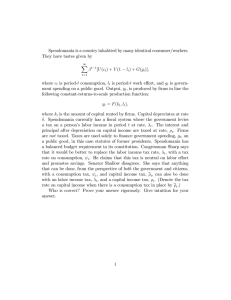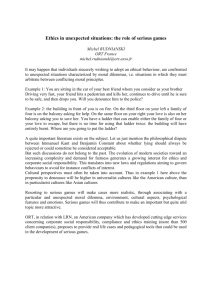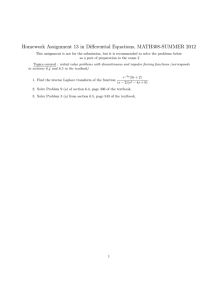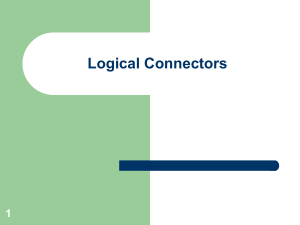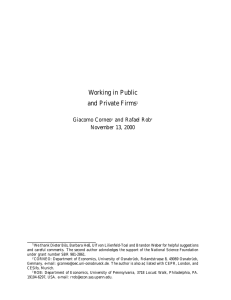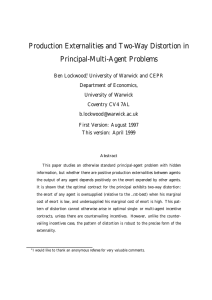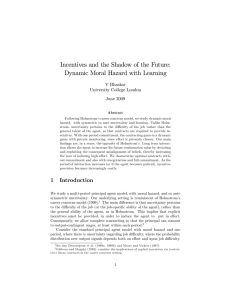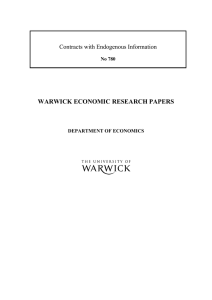CSE 431/531 Homework Assignment 3 February 15, 2007
advertisement
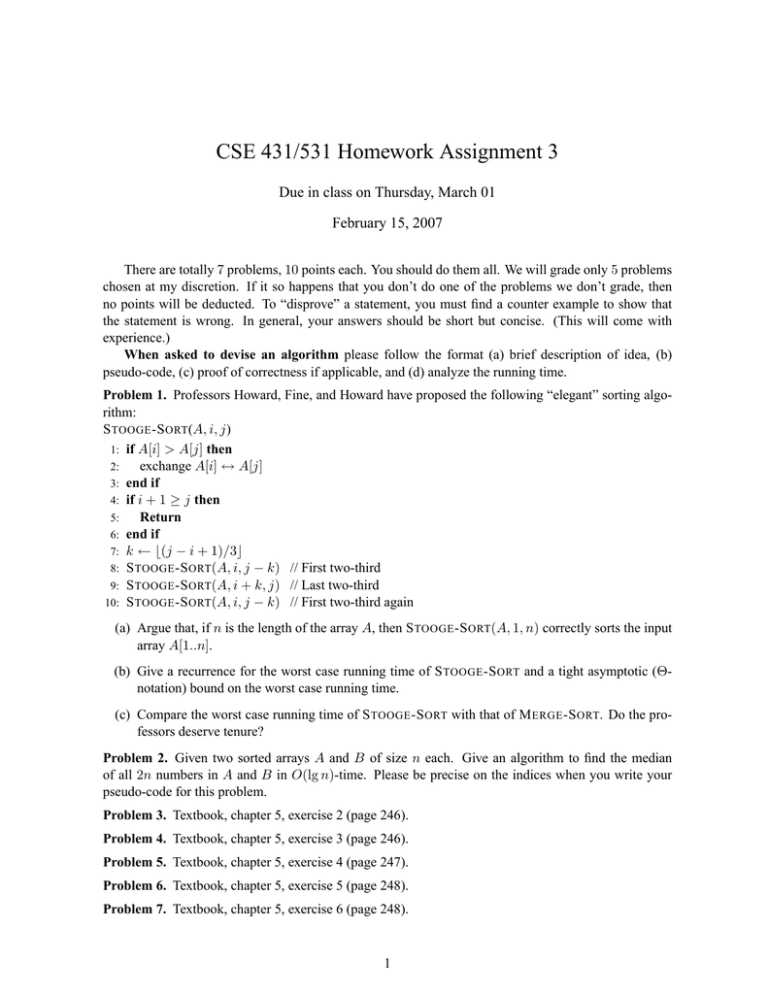
CSE 431/531 Homework Assignment 3 Due in class on Thursday, March 01 February 15, 2007 There are totally 7 problems, 10 points each. You should do them all. We will grade only 5 problems chosen at my discretion. If it so happens that you don’t do one of the problems we don’t grade, then no points will be deducted. To “disprove” a statement, you must find a counter example to show that the statement is wrong. In general, your answers should be short but concise. (This will come with experience.) When asked to devise an algorithm please follow the format (a) brief description of idea, (b) pseudo-code, (c) proof of correctness if applicable, and (d) analyze the running time. Problem 1. Professors Howard, Fine, and Howard have proposed the following “elegant” sorting algorithm: S TOOGE -S ORT(A, i, j) 1: if A[i] > A[j] then 2: exchange A[i] ↔ A[j] 3: end if 4: if i + 1 ≥ j then 5: Return 6: end if 7: k ← b(j − i + 1)/3c 8: S TOOGE -S ORT(A, i, j − k) // First two-third 9: S TOOGE -S ORT(A, i + k, j) // Last two-third 10: S TOOGE -S ORT(A, i, j − k) // First two-third again (a) Argue that, if n is the length of the array A, then S TOOGE -S ORT(A, 1, n) correctly sorts the input array A[1..n]. (b) Give a recurrence for the worst case running time of S TOOGE -S ORT and a tight asymptotic (Θnotation) bound on the worst case running time. (c) Compare the worst case running time of S TOOGE -S ORT with that of M ERGE -S ORT. Do the professors deserve tenure? Problem 2. Given two sorted arrays A and B of size n each. Give an algorithm to find the median of all 2n numbers in A and B in O(lg n)-time. Please be precise on the indices when you write your pseudo-code for this problem. Problem 3. Textbook, chapter 5, exercise 2 (page 246). Problem 4. Textbook, chapter 5, exercise 3 (page 246). Problem 5. Textbook, chapter 5, exercise 4 (page 247). Problem 6. Textbook, chapter 5, exercise 5 (page 248). Problem 7. Textbook, chapter 5, exercise 6 (page 248). 1

